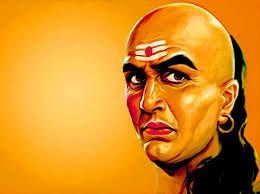When Prostitution was a state enterprise and paid for by the State

I had talked about prostitution in an earlier post and how despite its presence and ability to thrive in every society, everyone has closed their eyes to its inevitability and played a holier-than-thou game only to abuse the women folk more. The Netherlands is one country where prostitution is legal and the state charges tax on that “service”.
I had bought an English translation of Arthashastra (written by Chanakya) by LN Rangarajan. As was expected of a no-nonsense, very pragmatic thinker of that time, Chanakya did not beat around the bush and play games of religion here. He looked at what the reality was and proposed a very realistic solution.
Providing sexual entertainment to the public using prostitutes (ganika) was an activity not only strictly controlled by State but also one which was, for the most part, carried on in state-owned establishments (2.27.1). Women who lived by their beauty (rupajivas) could, however entertain men as independent practitioners (2.27.27); these could have been allowed to practice in smaller places which could not support a full-fledged state establishment. A third type of women of pleasure, mentioned in a few places, is pumsachali, perhaps meaning concubines (3.13.37).
Chanakya then went on to further described how the prostitution-related establishment would be taxed and maintained.
The state enabled the setting up of establishments with lump sum grants of 1000 panas to the head courtesan and 500 panas to her deputy, presumably to enable them to buy jewelry, furnishings, musical instruments, and other tools of their trade (2.27.1). The madam of the establishment has to render full accounts and it was the duty of the Chief Controller of Entertainment to ensure that the net income was not reduced by her extravagance (2.27.10). Independent prostitutes, who were neither given a grant or required to produce detailed accounts, had to pay a tax of one-sixth of their income (2.27.27).
These prostitutes and ladies also accompanied the men in battle to keep them motivated.
There are enough details that Chanakya went into. He even went into how the state was to prescribe the curriculum of the training given to the courtesans – at state expense – had to be well rounded! It would consist of:
singing
playing on musical instruments
conversing
reciting
dancing
acting
writing
painting
mind-reading
preparing perfumes and garlands
shampooing, and of course
art of lovemaking.
This makes the mindset of those times really amazing and vindicates my theory that throughout the earlier Indian history (Vedic and later – until the advent of the foreign invaders), the Indian mind was more open and honest. There was much less hypocrisy in its outlook of the world. If something was a human weakness, one did not hide behind artificial rules of veils/purdah/religion/morals. The weaknesses were accepted and one would live the world as it was rather than piously pontificating on what “should be”!
And Public Sector Undertakings (PSU) are not a modern event in the Indian economic scene. Prostitution houses were probably some of the earliest PSU!



